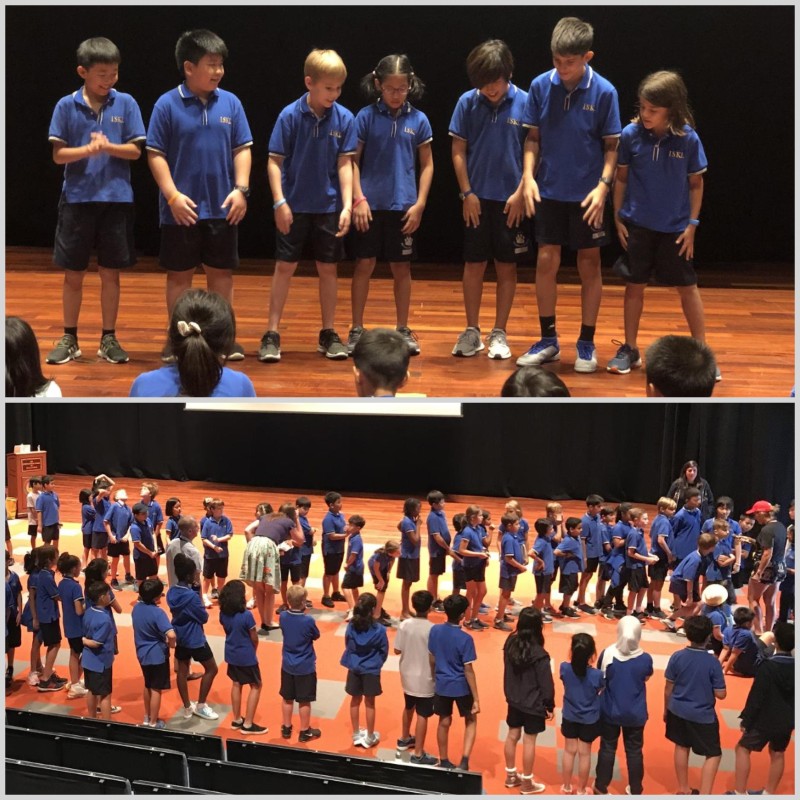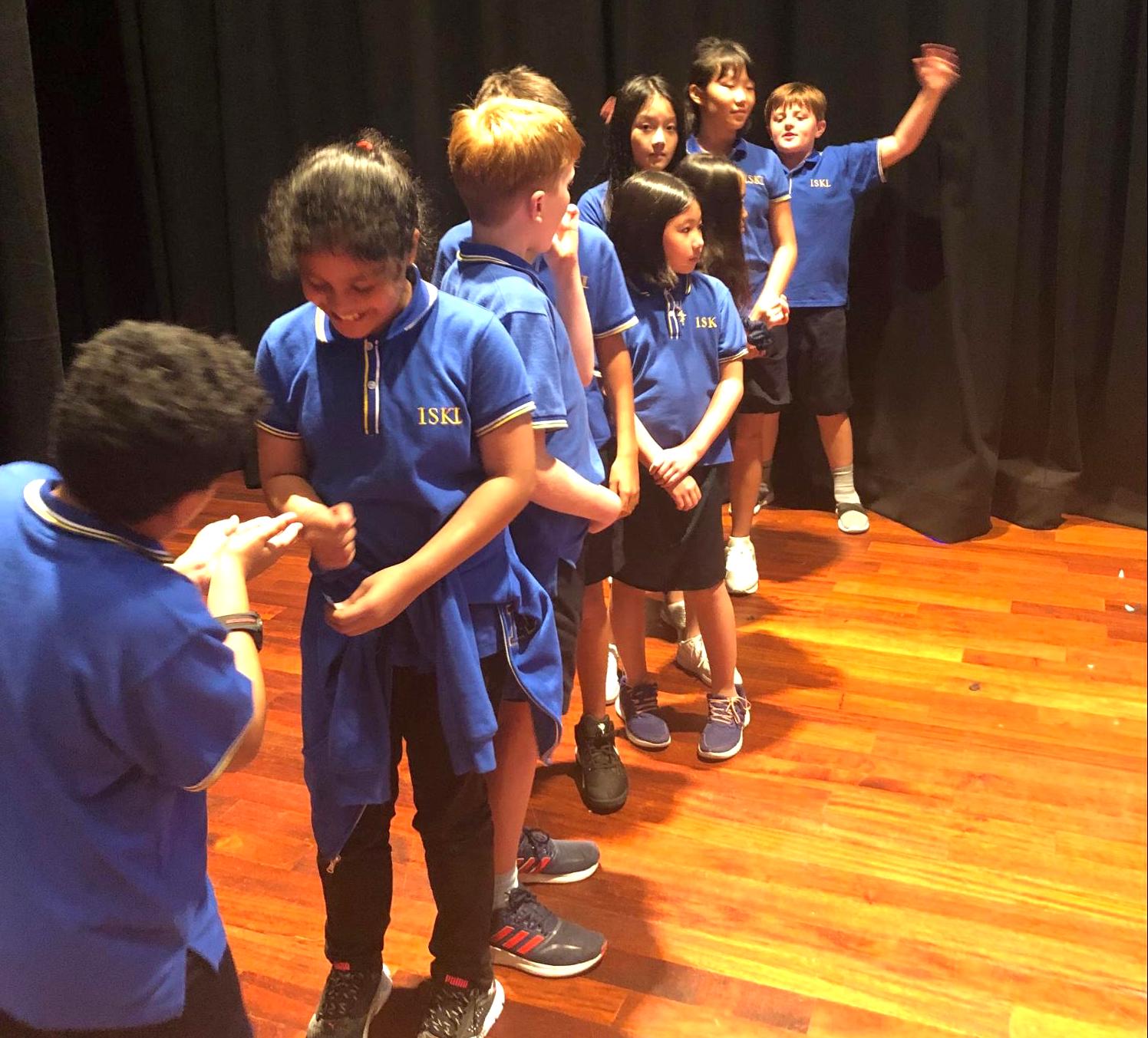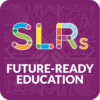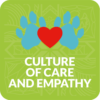
by Grade 5 students, Clea-Rose D and Eshani S
We are the Red hats. Some may know this ISKL concept, others may not. However, most 1st to 4th graders look up to them. Advertised as a symbol of responsibility and maturity, Red Hats have been a part of the ISKL Elementary School for a long time. For those of you who are not familiar with Red Hats, don’t worry. After all, in this article all shall be explained, the truth behind Red Hats.
During the ceremony in which Elementary Principal Julie Olson gives all the 5th graders their Red Hats, it is clearly put that with these hats come great responsibility. In our opinion, we think that the reason we were given the Red Hats is because it must serve as a symbol. The school wants the 5th graders to fully understand the responsibility they are being given as the leaders of Elementary, and a symbol, like these hats, are a great way to represent it. ISKL wants the 5th graders to mold the world, globally, environmentally and socially.
Many younger ISKL students admire the idea of being Red Hats. Perhaps because with it, comes being the leaders of Elementary? And just maybe, the opportunity to change the world. In 5th grade, the students are presented with the choice of joining several ‘Social Changemakers’ clubs. They are given the chance to perform in band or strings, and the choice to set an example for the younger grades, as the Red Hats are leaders.
We interviewed various new student 5th graders on what they thought it meant to be a Red Hat, as well as former Red Hats and the younger grades. We did this so that they could give advice to others and explain what the Red Hats mean to our school.
 A new student participating in the Red Hat program shared with us what the program means to her, “Being a Red Hat is about being a 5th grader who needs to be a role model for younger kids. I think I have a lot of responsibility as a Red Hat, because I want to show kids that when you’re in 5th grade, you need to focus and be responsible.” We asked how she was coping in a new school, and how she liked ISKL and the Red Hat program. “When I first came here I did have a lot of friends and they helped me a lot, coping with the new environment. I missed a little bit of school at the beginning, but with their help, I managed to catch up. I feel like I’m really a part of the school now, and I like ISKL. I feel this program will help me in the future, because knowing the responsibilities now will help me in my future when I’m in college, or maybe when I’m a parent. Yes, I can teach other kids and set an example for them even if they aren’t in ISKL, and be a Red Hat to them as well, and so they can be Red Hats in their schools,” she responded to this question.
A new student participating in the Red Hat program shared with us what the program means to her, “Being a Red Hat is about being a 5th grader who needs to be a role model for younger kids. I think I have a lot of responsibility as a Red Hat, because I want to show kids that when you’re in 5th grade, you need to focus and be responsible.” We asked how she was coping in a new school, and how she liked ISKL and the Red Hat program. “When I first came here I did have a lot of friends and they helped me a lot, coping with the new environment. I missed a little bit of school at the beginning, but with their help, I managed to catch up. I feel like I’m really a part of the school now, and I like ISKL. I feel this program will help me in the future, because knowing the responsibilities now will help me in my future when I’m in college, or maybe when I’m a parent. Yes, I can teach other kids and set an example for them even if they aren’t in ISKL, and be a Red Hat to them as well, and so they can be Red Hats in their schools,” she responded to this question.
Next, we asked another new student about his opinions on being a Red Hat. He has trouble speaking English, but he is managing well, and we managed to use a translator to communicate. We asked him what being a Red Hat means to him. “I think it means being a leader and role model,” he responded. We also asked him if he feels he has more responsibility now that he has a Red Hat.” He then said, “Yes, I do. Being a Red Hat feels like I’m very important now. It will help me be more responsible in the future.”
We also interviewed some of the former Red Hats, who have some good ideas about what the Red Hats really are to the school. We asked a sixth grader to give us her thoughts on the Red Hat program. “Some advice I have for the new Red Hats are to always try your best and follow the rules. Being a Red Hat means to be a leader who is both responsible and respectful, and to set an example for the other grades.” She said in response to our questions. “The Red Hat program is not only a chance to model for the other grades, but to help yourself grow and be a better person, so take advantage of this opportunity.”
Then, we interviewed some of the younger grade levels as well, to see what the Red Hats were from their perspective. We asked a 4th grader about what she was looking forward to in the Red Hat program, and what it meant to her. “I’m looking forward to setting an example for the younger students… and doing the announcements!” she replied. As a fourth grader, she mentioned that she was looking forward to being part of the Red Hat program and being a leader.
As well as band, 5th graders are given the chance to help better the world, via ‘Social Change Makers’. The Social Change Makers clubs are taught by various fifth grade teachers. However, they are not in control. Most clubs trust their students to arrange the projects, clean-ups or interviews by themselves. They are connecting with clubs in high school like the Composting Team, Gardening Club and Red Hat Reporters. These clubs help students improve and make our school a better place. A student once said, “Because if we won’t, who will?”

 The Red Hat program is not only built on setting an example for the younger grades, but for improving growth and leadership skills throughout the 5th grade, and the upcoming grades as well. If the Red Hats didn’t know what was expected and unexpected, than how are they supposed to model those behaviors? The Red Hats are an example of leadership in the school, and representation of the eldest and most mature students in the elementary, so they can teach the younger grades to be responsible and respectful. The Red Hat program is built on improving students’ leadership skills, opportunities for growth and helping others take care of yourselves, this place and each other.
The Red Hat program is not only built on setting an example for the younger grades, but for improving growth and leadership skills throughout the 5th grade, and the upcoming grades as well. If the Red Hats didn’t know what was expected and unexpected, than how are they supposed to model those behaviors? The Red Hats are an example of leadership in the school, and representation of the eldest and most mature students in the elementary, so they can teach the younger grades to be responsible and respectful. The Red Hat program is built on improving students’ leadership skills, opportunities for growth and helping others take care of yourselves, this place and each other.

